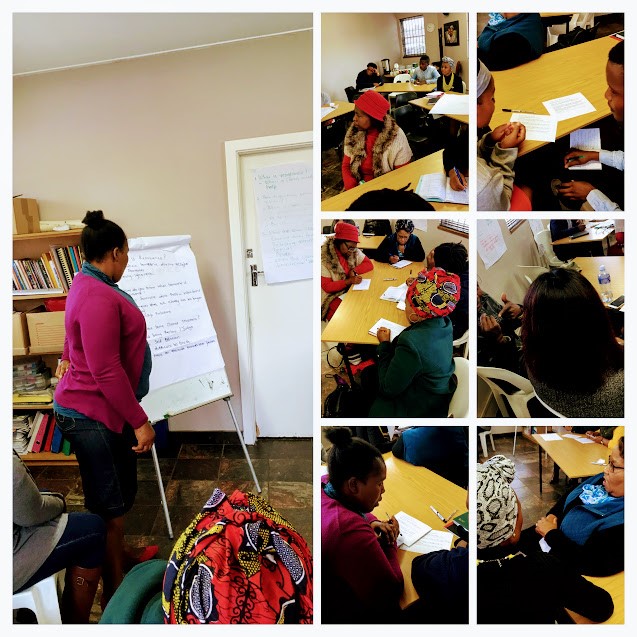Recently, Thabile and Linda co-facilitated a workshop for Social Service professionals on the topic of dealing with resistance. We had 17 lovely people in attendance including social workers, social auxiliary workers, and community workers. As social service practitioners, we all related to the narrative of the “resistant” client. We discussed the in-your-face direct resistance that sometimes happens and then the polite, passive resistance that often happens. With direct resistance, you know where you stand as the client will say something along the lines of “I have had 22 social workers, you are my 23rd. I am not interested” (Linda’s client of 15 years old, unfortunately a very true story).
Passive resistance is a little trickier; the outwardly friendly, polite acquiescent client who agrees with all but does absolutely nothing as agreed.
And then obviously there are a whole lot of shades of resistance in between.
We reflected a little while on our personal experiences, feelings and frustrations as professionals in the face of resistance. Most importantly, we got to exploring in more detail the very good reasons our clients display resistant behaviour.
Here are some of the reasons:
- fear of rejection,
- fear of the unknown,
- lack of trust of practitioner, language barriers,
- denial of the current situation,
- the client is not ready to talk or open up,
- afraid of being a failure,
- afraid of being judged,
- low self-esteem,
- protecting someone,
- pride,
- when the client has lost hope and
- emotional and physical pain…
Significant and substantial reasons exist for clients to be resistant. Resistance needs to be expected and respected. We explored sensitive and gentle ways to deal with this. We agreed that resistance is like a wall of protection the client builds around themselves and that our skill as practitioners is to find ways to move around or over the wall, being careful to never bash through it. The only time we would bash through a wall is when a life is at risk.
The best tool that we have at our disposal to work around resistance is ourselves. Relationship building, being present, listening, being consistent, and proving ourselves trustworthy are all ways we can gently and sensitively navigate resistance. And hopefully, when we do it well and with patience, the client will remove the walls themselves and step out to meet us!
With huge thanks to our professional practitioners who came to this workshop and shared of themselves with us and one another. We salute your work out there in the field!
You are all pièce de résistance!****pjɛs də reɪˈzɪstɒ̃s,French pjɛs də ʀezistɑ̃ noun

1. (especially with reference to creative work) the most important or remarkable feature.
